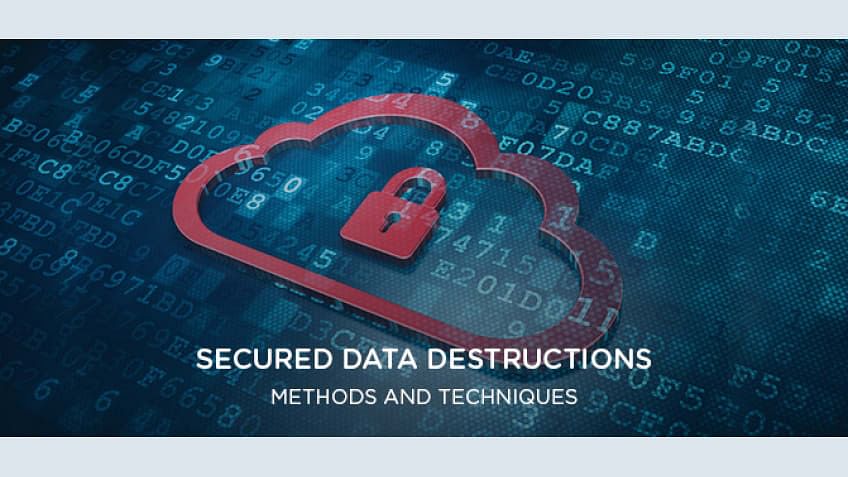Exploring the Significance of Data Destruction in the Context of Computer Safety Solutions and Protecting Confidential Information
In an era where information violations are increasingly common, the relevance of reliable data damage can not be overemphasized. What strategies can organizations apply to enhance their information devastation methods?
Recognizing Data Destruction
Data damage is an important component of computer security that involves the irreversible removal of data from storage tools to prevent unapproved accessibility and prospective information breaches. In a significantly digital landscape, organizations encounter increased threats connected with delicate information being improperly accessed or made use of. Reliable information destruction safeguards versus these threats, making sure that personal dataâEUR" such as consumer details, copyright, and financial recordsâEUR" can not be recovered after disposal.
Comprehending the significance of information devastation expands beyond plain compliance with governing and lawful structures; it is vital for preserving organizational integrity and depend on. When information is improperly managed or improperly damaged, the consequences can be severe, including financial loss, reputational damage, and lawful responsibilities.

Approaches of Data Obliteration

One widespread technique is data cleaning, which entails overwriting existing information with arbitrary patterns several times. This method makes the original data irretrievable, making it a prominent option for companies seeking to shield secret information.
One more technique is degaussing, which utilizes a powerful electromagnetic field to disrupt the magnetic domains on storage tools, successfully erasing the data. This approach is specifically reliable for magnetic media however is not relevant to solid-state drives.
Physical destruction is one more durable method, including the shredding or crushing of storage gadgets. This approach guarantees that data recuperation is practically difficult, making it excellent for very delicate information.
Lastly, file encryption can function as a corresponding method to information obliteration. By encrypting data prior to removal, organizations can add an added layer of security, ensuring that also if remnants are recuperated, they remain hard to reach without the decryption key. Each technique needs to be chosen based upon the degree of data level of sensitivity and the details safety requirements of the company.
Legal Conformity and Data Safety
Organizations have to navigate a complex landscape of legal requirements connected to data safety, specifically after executing approaches of data eradication. Numerous policies, such as the General Information Protection Law (GDPR) and the Medical Insurance Portability and Accountability Act (HIPAA), enforce rigid guidelines on how organizations have to get rid of and handle of delicate data. Failing to abide by these laws can bring about substantial lawful effects, consisting of substantial penalties find here and reputational damage.
Data devastation processes need to be diligently recorded to show compliance with relevant laws and criteria. This documentation not just acts as proof of adherence to legal responsibilities however likewise illustrates a dedication to protecting sensitive info. Organizations must likewise develop clear policies relating to information retention and damage timelines, making certain that information is not held longer than essential.

Additionally, routine audits and analyses of data destruction practices are vital to keep compliance and adapt to evolving legal frameworks (data destruction). By proactively resolving lawful demands, companies can alleviate dangers connected with information violations and demonstrate their dedication to information security. Eventually, focusing on legal conformity in data devastation processes is not simply a governing responsibility, yet a fundamental facet of a robust data safety and security strategy
Effect On Organization Reputation
The credibility of a company can be substantially influenced by its strategy to information damage and management. In today's electronic landscape, where data violations can happen at any minute, the failure to properly get rid of sensitive information can bring about extreme effects. Organizations that inadequately manage information destruction risk subjecting personal consumer details, which not only breaches personal privacy legislations yet additionally erodes depend on among clients and stakeholders.
A damaged online reputation can lead to reduced consumer commitment, as customers come to be hesitant to engage with a business that has actually shown neglect in safeguarding their information. Adverse publicity surrounding an information breach can have a long-term impact, as possible customers could be prevented by the viewed absence of safety. This can cause a straight decline in income and market share.
Furthermore, services that focus on information destruction as component of their safety method can improve their reputation by showcasing their commitment to protecting you can look here delicate details. By taking on rigorous information management techniques, companies can not just alleviate dangers however likewise place themselves as credible entities in their respective markets, therefore enhancing their overall brand image.

Best Practices for Secure Disposal
Implementing finest techniques for safe disposal of data is crucial for reducing risks linked with data breaches content and ensuring conformity with privacy laws. Organizations must adopt a comprehensive information disposal policy that lays out procedures for both digital and physical information damage.
For physical data storage space gadgets, such as hard disks, shredding or degaussing is advised to avoid information healing. Furthermore, organizations need to keep a chain of guardianship documentation throughout the disposal procedure, making sure responsibility and traceability of disposed items.
For digital data, using software program that follows market standards for data cleaning is vital. This software application ought to overwrite existing information several times, making recovery basically difficult. It is also vital to validate the performance of the information destruction process via audits or third-party analyses.
Training employees on secure disposal methods includes one more layer of safety and security, as human error can commonly cause data direct exposure. Frequently upgrading and assessing disposal policies guarantees placement with developing regulations and technical advancements. By applying these best practices, companies can significantly minimize the risk of unapproved data access and improve their overall information defense method.
Conclusion
To conclude, information destruction is a fundamental element of computer system safety and security solutions that ensures the security of personal information from unauthorized gain access to. Applying effective methods of information removal, adhering to lawful compliance, and acknowledging the effect on organization track record are important parts of a detailed information safety and security method. By adopting best methods for safe disposal, companies can foster count on with clients and protect sensitive data, eventually adding to a much more safe digital landscape.
In an era where data breaches are increasingly typical, the value of reliable data devastation can not be overemphasized.Data damage is an important element of computer system protection that includes the irreversible removal of information from storage space tools to stop unapproved access and possible data violations. Organizations should additionally establish clear policies regarding data retention and devastation timelines, guaranteeing that information is not held longer than necessary.
By proactively attending to legal demands, companies can reduce threats associated with data violations and demonstrate their dedication to data safety (data destruction). Ultimately, focusing on legal compliance in information destruction processes is not simply a regulatory commitment, but an essential aspect of a robust information safety technique